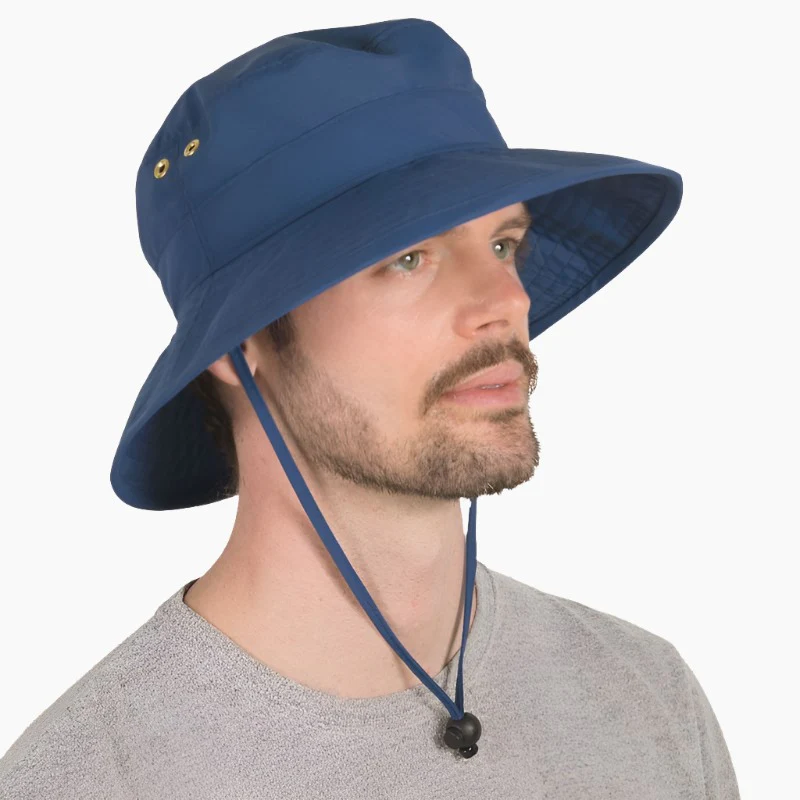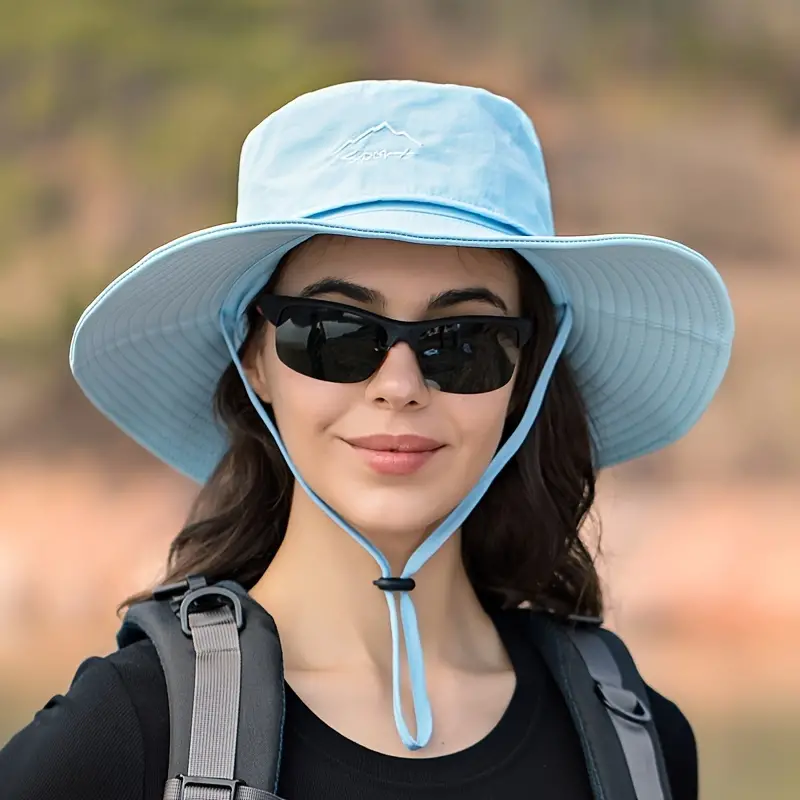I. The Importance of a Good Hat

When it comes to hiking, having the right gear is essential for a successful and enjoyable experience. One often overlooked piece of gear is a good hiking hat. However, a good hat can make a significant difference in your overall hiking experience. In this article, we will discuss the importance of a good hat while hiking.
A. Protecting Your Head from the Elements
One of the main functions of a hiking hat is to protect your head from the elements. Whether you are hiking in the mountains, the desert, or the forest, a hat can provide much-needed protection from the sun, wind, rain, and even snow. A hat with a brim can shield your face and neck from the sun’s harmful rays, preventing sunburn and reducing the risk of heatstroke. Additionally, a hat can help to keep your head dry in rainy or snowy conditions, preventing discomfort and potential health issues such as hypothermia.
B. Shielding Your Face from the Sun
In addition to protecting your head from the elements, a good hiking hat can also shield your face from the sun. Prolonged exposure to the sun can lead to sunburn, premature aging, and an increased risk of skin cancer. A hat with a wide brim can provide shade for your face, reducing the risk of sun damage and allowing you to enjoy your hike without constantly worrying about applying and reapplying sunscreen.
II. Factors to Consider When Choosing a Hiking Hat
Now that we understand the importance of a good hiking hat, let’s discuss the factors to consider when choosing the right hat for your outdoor adventures.
A. Material and Breathability
When choosing a hiking hat, it’s important to consider the material and breathability. Look for hats made from lightweight, breathable materials such as nylon, polyester, or quick-drying fabrics. These materials will help keep your head cool and dry, especially in hot and humid conditions. Some hats also feature mesh panels or ventilation holes to enhance breathability. Additionally, consider a hat with moisture-wicking properties to help keep sweat away from your skin.
B. Brim Size and Coverage
The size and coverage of the brim are critical factors to consider when choosing a hiking hat. A wider brim provides more coverage and better protection from the sun. It can also help shield your face and neck from rain and snow. However, it’s essential to find a balance, as an overly large brim may obstruct your vision or be cumbersome in windy conditions. Consider the types of terrain and weather conditions you will encounter on your hikes and choose a hat with an appropriate brim size for your needs.
C. Adjustability and Comfort
Lastly, consider the adjustability and comfort of the hiking hat. Look for hats with adjustable features such as a chin strap, drawcord, or Velcro tabs to ensure a secure and comfortable fit. A hat that is too loose may be blown away by the wind, while a hat that is too tight can cause discomfort and headaches. Additionally, consider factors such as sweatbands, interior padding, and overall weight to ensure maximum comfort during long hikes.
III. Different Types of Hiking Hats
A. Wide-Brimmed Hats
Wide-brimmed hats are a popular choice for hikers, and for good reason. Their wide brims provide excellent sun protection for your face, ears, and neck. They also offer some relief from the heat by providing shade and allowing air to circulate around your head. Look for a wide-brimmed hat with a UPF (Ultraviolet Protection Factor) rating for maximum sun protection.
B. Baseball Caps
For more casual and low-intensity hikes, a baseball cap can be a great option. Baseball caps provide shade for your eyes and face, and many are made from quick-drying materials that are ideal for hot and sunny conditions. While they don’t offer as much sun protection as wide-brimmed hats, they can still be a practical choice for shorter hikes.
C. Sun Hats with Neck Flaps
For hikes in areas with intense sun exposure, a sun hat with a neck flap can provide added protection for your neck and shoulders. These hats are designed with a longer back brim or a neck flap that can be easily tucked into your shirt collar for extra coverage. They are a great choice for long days on the trail when sunburn and heat exhaustion are a concern.
IV. Recommended Hiking Hats for Various Conditions
A. Hot and Sunny Weather

In hot and sunny weather, it’s essential to protect yourself from the sun’s harmful rays. A wide-brimmed hat with a UPF rating of 50+ is the best choice for maximum sun protection. Look for a hat made from lightweight, breathable materials like nylon or polyester, and consider one with mesh panels for added ventilation. A hat with a moisture-wicking sweatband will also help keep you cool and dry.
B. Rainy and Wet Conditions
When hiking in rainy and wet conditions, a waterproof hat is a must. Look for a hat made from a water-resistant material like Gore-Tex or nylon, with a wide brim to keep rain off your face. A hat with a chin strap can also be useful to keep it secure in windy conditions. For added visibility in low-light situations, consider a hat with reflective details.
C. Cold and Windy Environments
In cold and windy environments, a hat that provides insulation and wind protection is essential. A beanie or winter hat made from a warm, moisture-wicking material like merino wool or fleece is a great choice. Look for a hat that covers your ears and fits snugly to retain heat. A hat with a built-in ear band for extra warmth can be particularly useful in extremely cold conditions.
V. Tips for Maintaining and Caring for Your Hiking Hat
A. Cleaning and Drying
Proper cleaning and drying of your hiking hat are essential for maintaining its performance and longevity. Whether your hat is made of lightweight nylon or insulating fleece, here are some tips for keeping it clean and fresh:
- Spot Cleaning: For minor stains and dirt, spot cleaning with a gentle soap and water is often sufficient. Use a soft brush or cloth to gently scrub the affected areas, then rinse with clean water and allow to air dry.
- Hand Washing: If your hat is particularly dirty or sweaty, hand washing is the best method for a thorough clean. Use a mild detergent and lukewarm water to gently wash the hat, paying special attention to the sweatband. Rinse thoroughly and gently squeeze out excess water before allowing the hat to air dry.
- Machine Washing: Some hiking hats are machine washable, but always check the care label first. Use a gentle cycle and a mild detergent, and consider placing the hat in a mesh laundry bag to protect it during the wash cycle.
- Drying: To prevent damage to the shape of your hat, avoid using a dryer. Instead, reshape the hat and allow it to air dry away from direct heat and sunlight. If your hat has a moldable brim, shape it to your desired style while it dries.
B. Storing and Packing
Proper storage and packing can help maintain the shape and integrity of your hiking hat, ensuring that it will be ready for your next adventure. Follow these tips to keep your hat in top condition:
- Storage: When you’re not wearing your hat, store it in a cool, dry place to prevent mold and mildew. If your hat is crushable, consider storing it in a hat box or using a support to help maintain its shape.
- Packing: When packing your hiking hat for a trip, it’s essential to protect it from being crushed or misshapen. If your hat is not crushable, carefully pack it in a suitcase or backpack, surrounded by soft items like clothing to provide cushioning. Alternatively, consider investing in a crushable or packable hat that can be easily folded and stowed without losing its shape.
- Hat Care Products: Consider using specialty hat care products such as waterproofing sprays, stain repellents, and hat shapers to extend the life of your hiking hat. These products can help protect your hat from the elements and maintain its appearance over time.
In conclusion, a good hiking hat is an essential piece of gear that can provide protection from the elements and enhance your overall hiking experience. When choosing a hiking hat, consider factors such as material and breathability, brim size and coverage, and adjustability and comfort to find the right hat for your outdoor adventures. With the right hat, you can stay comfortable, protected, and focused on enjoying the beauty of nature while exploring the great outdoors.

